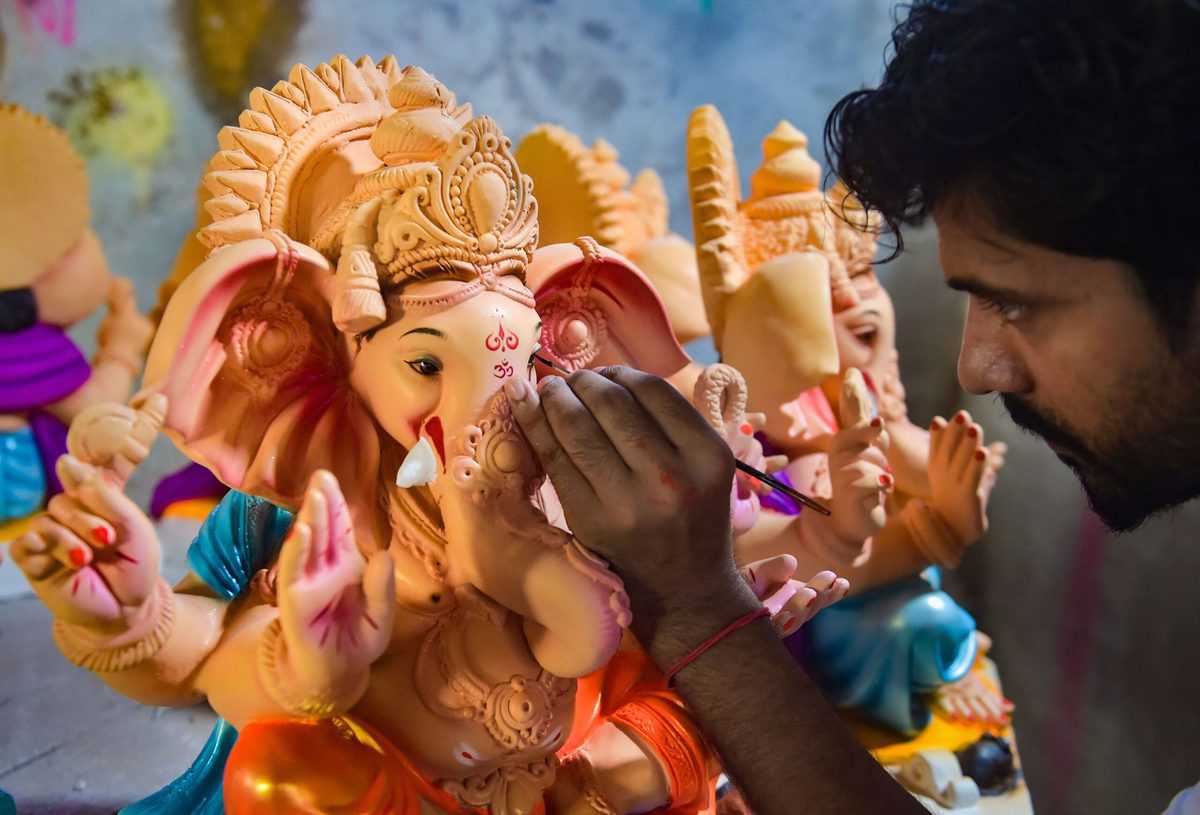
Mumbai: The Ganesh festival sees households and `Mandals’ or groups installing idols of the lord at home and in pandals across Maharashtra, but decades ago Agroli village pioneered a different approach which is now emulated by many other villages.
Way back in 1961, communist leader Bhau Sakharam Patil proposed the ‘One Village One Ganpati’ policy during the Ganesh festival in Agroli, now part of Navi Mumbai region.
Each family need not install its own idol but there should be one common Ganesh idol for the village which would save on expenditure, comrade Patil suggested in the aftermath of a flu epidemic in the area.
The village’s inhabitants were mostly fisherfolk and saltpan workers (Agari-Koli) whose income sources were salt-making, fishing and paddy cultivation.
“People were poor, but many families would still borrow money to celebrate the festival and become indebted,” said Dilip Vaidya, a trustee of the Sarvajanik (community) Ganesh Mandal of Agroli.
Initially, the people of the village were not very receptive to the idea as they were afraid that a breach of tradition will invite divine wrath. But gradually every family came on board and the village began to celebrate the festival by installing a common Ganesh idol for 11 days.
“This was the first village where `One Village One Ganpati’ concept was implemented and the tradition has continued for more than 60 years,” said Bhushan Patil, a grandson of Bhau Patil, speaking to PTI.
It has helped foster unity in the village, he added.
“There are 1,500 families in the village and every household contributes for the festival,” Patil said.
The concept spread elsewhere in Maharashtra too, and it has caught on afresh after the COVID-19 pandemic, he said.
“One Village One Ganpati concept is now popular in western Maharashtra too, especially in Satara, Sangli and rural areas of Solapur and Pune districts,” Manoj Lohiya, Special Inspector General of Police (Kolhapur Range), told PTI.
This year 593 villages in Satara have installed a common Ganesh idol.
As many as 200 villages in Sangli, 300 villages in Solapur and 400 villages in Pune district have also implemented this policy, Lohiya said.
In Marathwada range comprising Aurangabad rural, Jalna, Beed and Osmanabad districts, a total of 1,351 villages have installed common Ganesh idols during the festival.
In Nanded range, which consists of districts of Nanded, Parbhani, Hingoli and Latur, 1,405 villages have implemented the policy of single Ganesh idol.
In the five districts of Nashik range, 1,750 villages have implemented the concept.
It helps create a healthy atmosphere and harmony as everybody comes together to celebrate the festival, said Inspector General of Police (Aurangabad range) K M M Prasanna.
After the COVID-19 pandemic, people in many places felt that they should cut down on the expenditure on festivals, he said.
In some places, police and the administration promote the concept as a multitude of Ganesh Mandals leads to rivalries and tensions between groups.
As per the police department’s data, this year 71,338 Ganesh Mandals had obtained permission to install Ganesh idols in public pandals in Maharashtra.

